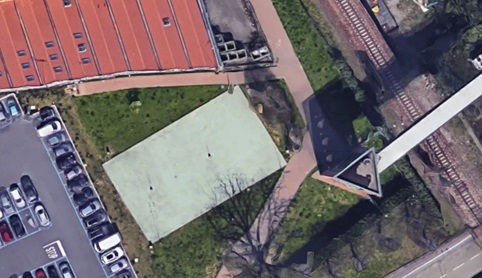Modeling of the River Basin (Mis River)
- Parisa Falakdin

- Dec 7, 2016
- 4 min read
Introduction:
In this case study we considered the River Basin of Mis basin which are located in Belluno, Veneto.

Objectives:
The goals of this preliminary project are:
1. To determine its characteristics and get them for different return periods: 2 years and 200 years.
2. To solve the problem of overflow for the 200 year return period through the design and cost estimation of a set of weirs downstream.
Project Procedures:
Scheme of the Project:

Basin Morphology:
The main purpose of this part is to obtain hypsographic curve, mean altitude hm, mean height Hm, travel time T, average slope by delineating watershed in ArcMap.
Introduction to ArcMap:
ArcMap is the main component of Esri's ArcGIS suite of geospatial processing programs, and is used primarily to view, edit, create, and analyses geospatial data. ArcMap allows the user to explore data within a data set, symbolize features accordingly, and create maps.
Implementation:
The projection is set to digital terrain model. Here National grid projected co-ordinate system (Monte Mario (Rome) Italy 1) is selected since the study area falls in eastern part of the Rome (Italy). Since the given DTM contains some missing information and errors were processed using the fill tool from spatial analyst tools->Hydrology.
The flow direction of the river is obtained from “Flow Direction” tool in ArcMap. This output is used as input for obtaining the flow accumulation of the river using “Flow Accumulation” tool. To determine the outlet of the river basin the raster file of the study area was compared with the DTM, the location of the outlet point (elevation-325m) is found from the base map. This point was created as shape file in ArcMap and its elevation was fed into its attribute table. Snap the outlet point using “Snap pour point” tool (Snaps outlet points to the cell of highest flow accumulation within a specified distance) and give the snap distance to be 10 because maximum distance, in map units, to search for a cell of higher accumulated flow, the DTM pixel size is 20*20. The watershed was demarcated by using flow direction raster and snapped output point in “Watershed” tool. We demarcated the watershed for the Mis River also in the same way. The contour line is drawn using the DTM as the input layer, we used the whole DTM given to draw contour line because if we use only the clipped study area alone we faced the problem during cutting the watershed for different contour interval. The upper Mis basin is also cut in the same contour interval.

Results:
First step we did was identifying the River Basin, and after that we had to identify the stream we wanted to analyze. For the stream selected we analyzed the hydraulics characteristics of the section of interest. To do this we used ARC-GIS software.



Hydrologic Study:
The main purpose of this part is estimating the peak discharge using different methods such as: empirical method, SCS-CN method and using Urbis software.
Introduction of Urbis:
Urbis 2003 V2 is a piece of software which was developed by Prof. Massimo (Politecnico di Milano) and Prof. Alessandro Pagani (Etatec Studio Paoletti Srl). This software allows us calculate the peak runoff Qmax from rainfall data, effective rainfall, the area of the river basin, characteristic time, runoff coefficient.
Results:
First we established we are analyzing a Natural Basin. The time step chosen was 5 minutes. We analyzed it for two return periods: 2 years and 200 years. For the curve of possible pluviometry we used the method of three parameters (a, b, c), that had different values for each return period. For the Hyetograph we used the Chicago Hyetograph and inserted a rainfall duration of 3.06 hours.
For the determination of the IUH we used the Kinematic Method. The results obtained are resumed in the next table:



Hydraulic Study:
Introduction of HEC-Ras:
HEC-Ras is an engineering software designed to perform one-dimensional hydraulic calculations for a full network of natural and constructed channels. It includes many components such as: steady flow simulation, unsteady flow simulation, sediment transport, and water quality analysis. In this case it was used steady flow simulation to compute the water surface profile corresponding each time return period.
Implementation:
Introducing geometry of the river:
Since HEC-Ras is one dimensional tool, we just introduce the river as a straight line.
Input cross section: In total there are 42 cross-sections along the path and they are classified into 5 types as it is shown in the following images:

For each cross-section we have to define geometry parameters: station, elevation, length, radius, left bank, right bank, ineffective flow area, levees, obstructions; hydraulic parameter: roughness coefficient. In this case study, it was used the average roughness coefficient by comparing the cross sections with picture from USGS website5 in order to find out the unique value.


Introducing some hydraulic works:
There are 2 bridges (in cross section 68 and 118). To adding them to our project we used the HEC-Ras tool “Edit and/or Create Bridges and Culvert”.

Setting up the steady condition:
Input the design flow rate which were computed from the hydrology study part corresponding 3 cases (profiles):
Mis Basin with Tr = 200 years
Mis Basin with Tr = 2 years
Setting up boundary condition: upstream and downstream.
Before introducing our bridges in our project we proceeded to interpolate the cross section to have a better concept of our river. This is the result.

Result and discussion:
After running steady flow analysis we obtain the water surface profiles corresponding those flow rate discharges which are mentioned before.







Comments